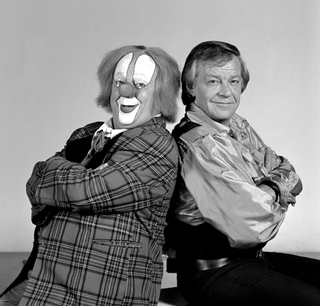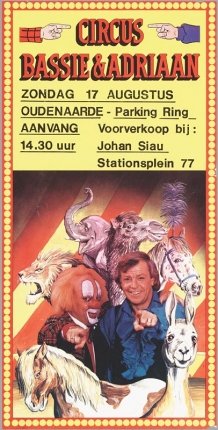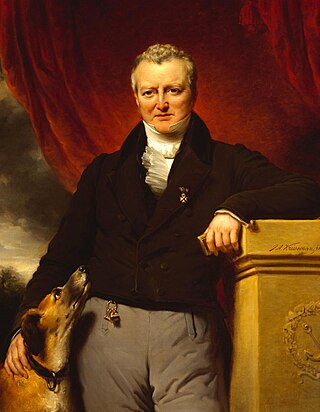
Circus Herman Renz is the largest circus in the Netherlands, and has been touring the Netherlands and other countries since 1911.

Circus Herman Renz is the largest circus in the Netherlands, and has been touring the Netherlands and other countries since 1911.
![Arnold van der Vegt [nl] in 1930 Arnoldus Nicolaas van der Vegt.png](http://upload.wikimedia.org/wikipedia/commons/thumb/4/47/Arnoldus_Nicolaas_van_der_Vegt.png/220px-Arnoldus_Nicolaas_van_der_Vegt.png)
Arnold van der Vegt decided in the winter of 1911 to start his own circus. The first artist he contracted was his friend Tom Mix. In 1923 Arnold changed the name of the circus to "Renz". During World War II it was difficult for the circus to survive, and because of the circumstances it was forced to give shows for Nazi Germany. After the war, the circus returned to normal shows. Arnold van der Vegt died in 1955. (Arnold van der Vegt is not related to Ernst Jacob Renz, Berlin 1842 or Renz International). [1] [2]

After the death of Arnold van der Vegt, his son Herman Sr. took over management of the circus. In 1970 he transferred the running of the circus to his sons, Paul and Arnold Jr. (also known as Nol). Paul acted as a clown in the shows and Arnold Jr. became the director. [2]
Arnold Jr. and his wife Marina made the circus successful. For many years they traveled around with success. In 1967 their son Herman Jr. was born. As a child, Herman's ambition was to continue his fathers circus business. [2]
The success of circus Renz reached its peak in 1978 when Bassie and Adriaan made several television series with Circus Renz as the backdrop. At the weekends, they appeared in the circus as clowns. During this period the shows were regularly sold out. [2] [3]
In 1980 the Dutch TV producer Joop van den Ende established Circus Bassie & Adriaan. The staff of Circus Renz was involved with the entire transport of Circus Bassie & Adriaan. Circus Renz itself traveled throughout the country. At the end of 1983 Joop van den Ende ended his work with the circus, after he did a show with the Dutch singer André Hazes.
At Circus Renz, the Steijvers family started a new act, followed by the new act of the Luycx Sisters in 1983. Herman Jr. fell in love with Diana Luycx and they started a relationship.
Arnold Jr. again worked with Bassie and Adriaan in 1985. The cooperation between them was renewed and the circus Renz grew. But, in 1988, Arnold Jr. became very ill. His last wish was to travel once more with Bassie and Adriaan and a complete new circus tent. The new tent was bought, but in January 1989 Arnold van der Vegt Jr. died of cancer. Because the new tour was already planned, Bassie and Adriaan finished the tour after which, in 1989, the tent was sold.

In 1990 Herman Jr., and his girlfriend Diana, performed for one season with the French circus Achille Zavatta II. Despite this, Herman wanted to continue the Circus Renz with Diana, and the families of Steijvers and Ronday.
In September 1990 Diana & Herman Renz ended a contract with the Circus Achille Zavatta II. On 13 March 1991 they open with the renewed 'Dutch National Circus Herman Renz'. The first show on the tour was in Eemnes. For the young board of directors it was a big venture, but thanks to a contract with Center Parcs it turned into a large success.
Over a five-year period, the now-married Diana & Herman Renz developed the circus into the largest in the Netherlands and later Benelux. The circus always wintered the show in the Dutch city of Haarlem. In December 1995 Diana & Herman Renz received the Oscar Carré Trophy. The trophy was awarded by the Swiss circus director Frédy Knie of Circus Knie.
The 1996 tour started on 22 February in the Dutch city of Hilversum. A new tent has ordered and there was a new contract with Center Parcs for the show. [2]
On 13 March 1996 the circus had arrived in the Dutch city of Hapert for a show at Centerparc 'Het Vennenbos'. Herman and Diana had not been seen yet that day. Worried manager Robert Ronday looked for them and found them dead, poisoned by carbon monoxide. The shows and the tour were temporarily cancelled. Some days later, the Circus moved to Haarlem, where the funeral took place. The couple were then buried at the 'Zorgvlied' cemetery in Amsterdam. [2]

A week after the burial Herman's mother announced that she wanted to sell the circus for 800,000 Dutch guilders. Many people wanted to save the circus. Nine-year-old Ronald Blom generated a lot of publicity, appearing on television shows such as the 'TV-Show of Ivo Niehe ', 'Hart van Nederland' and 'Het Jeugdjournaal' (the news for youth). There was even a story in the local newspaper of Haarlem ('Haarlems Dagblad'). Ronald also collected money (in total 1,012 guilders). Ed Glas also organized actions to save the circus, and together with the interim executive board of the circus, Toin Routers (public relations officer of the circus in 2005) and Hans de Jager, a fan club was set up. Individuals and companies could rent a chair in the Circus as sponsors. Princess Household Appliances , a company located in Breda owned by Aad Ouborg , sponsored the circus until 1998.
Today the circus is owned by the families Steijvers, Ronday and Olivier. The executive board consists of five people.
Circus Herman Renz went bankrupt in October 2015, after the Duursma Group took it over. The Duursma Group restarted Circus Herman Renz with a new series of performances at the Maashorst Fair in Schaijk. [4] [5]
On 22 December 2002 circus Herman Renz received royal recognition. Mayor Jaap Pop of Haarlem had the honour of presenting the award. Circus Herman Renz was the first Dutch circus to receive this award, which motivated the employees of Circus Herman Renz to preserve the last great Dutch circus.
During December and January, Circus Herman Renz presented its famous 'Wintershow'. During this period, visitors voted for their favorite artists. The winner received the 'Haarlemse Publieksprijs' (The Harlem Audience Award).

Bassie & Adriaan was a television programme series focusing on the adventures and lives of a circus duo consisting of clown Bassie and acrobat Adriaan, played by real-life circus duo Bas and Aad van Toor.

Hermenegildus Felix Victor Maria "Herman" Finkers is a Dutch comedian, who is well known in the Netherlands for his friendly, dry-witted humour and his ambiguous style of storytelling. In his way of telling a story the moral should never be in the way of a good joke or pun. His humour is never at the expense of others, except his brother Wilfried Finkers, who is frequently the target of jokes. Wilfried Finkers co-wrote material and occasionally appeared in his brother's shows.

Godert Alexander Gerard Philip, Baron van der Capellen was a Dutch statesman from Utrecht.

Circus Bassie & Adriaan was a large Dutch circus that had made different tours through the Netherlands and Belgium. It has been touring in the periods 1980-1982 and 1985-1989.
de Buddy's was a boys' show choir based in Delft, Netherlands that existed under this name from 1976 - 2005. The choir was founded as a traditional church choir in 1966 as De Nicolaessanghers with 30 voices from 9–16 years. Inspired from the French choir Les Poppys and their hit "Non, non, rien n'a changé" the choir was renamed and changed to the pop genre. In 2005 de Buddy's was succeeded by re-speKt.

Adriaan van der Hoop was a Dutch banker and in the first half of the 19th century one of the richest men in the Netherlands. He also was an influential politician: a member of the city council, the States-Provincial in Haarlem and the Senate in The Hague. In his later years he became an important art and plant collector. On his death he left 250 paintings to the city of Amsterdam, who could barely pay the inheritance tax. In this way Van der Hoop contributed substantially to the collection of the Rijksmuseum.

Veerplas is an artificial lake directly east of the Dutch city of Haarlem. It was dug in 1994, mainly for recreation purposes and forms part of the Spaarnwoude recreational area.

David van der Plas, was a Dutch Golden Age portrait painter.

Adriaan van der Willigen was a Dutch writer of plays and travelogues who is mostly remembered today for his comprehensive list of painter biographies.

Ivo Johannes Ignatius Niehe is a Dutch radio and television presenter, television producer and actor.

Sara Rothé (1699–1751) was an 18th-century art collector from the Northern Netherlands, known today as the former owner of two dollhouses now on display in the Frans Hals Museum and the Gemeentemuseum Den Haag.

Kunst zij ons doel, or KZOD, is the name of an artists club in the Waag, Haarlem.

Zorgvlied is a cemetery on the Amsteldijk in Amsterdam, the Netherlands, on the left bank of the river Amstel. The cemetery was opened in 1870 by the city of Amstelveen which still owns and operates it, though since 1896 it is located within the boundaries of the city of Amsterdam. One of the country's best-known cemeteries, it is notable for the large number of celebrities, especially from the literary and theater worlds, buried there.

The Royal Theater Carré is a Neo-Renaissance theatre in Amsterdam, located near the river Amstel. When the theatre was founded in 1887, it was originally meant as a permanent circus building. Currently, it is mainly used for musicals, cabaret performances and pop concerts. Carré is located next to the Amstel, close to Waterlooplein. Its address is Amstel 115.

The Tweede Schilderijenzaal, or Painting Gallery II, is one of two art gallery rooms in Teylers Museum. The Tweede Schilderijenzaal was built in 1893 as an extension of the first gallery.
De Graaf van het Hoogveen was a restaurant located in Badhotel Zeerust in Noordwijk aan Zee, Netherlands. It was a fine dining restaurant that was awarded one Michelin star in 1982 and retained that rating until 1988.

Cornelia van der Gon was an owner of a show-dollhouse that attracted a following in Amsterdam in the 17th century.

Encho Keryazov is a Bulgarian acrobat.
The following is a timeline of the history of the municipality of Haarlem, Netherlands.

Onze Kunst van Heden was an exhibition held in the winter of 1939 through 1940 at the Rijksmuseum in Amsterdam. Due to the threat of invasion in the years leading up to World War II, the Netherlands' government stored many items from the Rijksmuseum's permanent collection. The resulting empty gallery space was utilized by contemporary Dutch artists to exhibit and sell their art. It was organized by the director of the Rijksmuseum Frederik Schmidt Degener. The show was open to all artists, with each artist allowed to enter four pieces. 902 artists exhibited 3,200 works of art in 74 rooms and cabinets of the Rijksmuseum.
„De kunstenaar kan in tijden van maatschappelijke benauwenis weinig positiefs doen om rampen af te wenden, maar wel kan hij door mede te helpen nationale uitingen op het eigenaardigst naar voren te brengen het gemeenschapsbesef versterken. Wanneer de belangstelling van het publiek uitgaat naar deze manifestatie, die in zulk een omvang in Holland nog niet gezien is, dan zal menige kunstenaar zich op zijn beurt gesterkt voelen".
"The artist can do little positive in times of social distress to avert disasters, but he can, by helping to bring out national expressions in the most idiosyncratic way, strengthen the sense of community. When the public is interested in this event, which has not yet been seen to such an extent in Holland, many artists will feel strengthened in turn."
![]() Media related to Circus Herman Renz at Wikimedia Commons
Media related to Circus Herman Renz at Wikimedia Commons